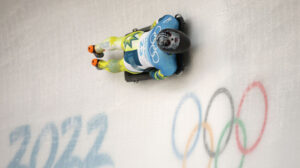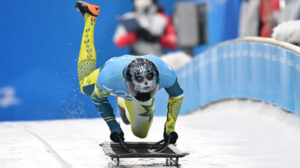2 October 2025
By James Mullan
Cremorne athlete Nick Timmings is setting his sights on the 2026 Winter Olympics in Italy, hoping to once again represent Australia in the high-octane sport of skeleton. Timmings, accustomed to high-speed descents, faces an uphill battle against financial hurdles and limited access to training facilities as he strives to secure his spot.
Timmings’ journey into skeleton began unexpectedly in 2012. “I got recruited in 2012, so I came from a soccer and an athletics background, so just your typical Australian sports I would say,” he explained. The Bobsleigh Skeleton Australia conducted testing days across the country, and Timmings, already familiar with sliding sports through an athletics training partner, decided to give it a go. “I thought might as well give it a go, even if I don’t want to continue, I’ll get some numbers on the board and see how I’m doing physically.”
His initial experience was a trial by fire in Lake Placid, New York. “Literally day one we got there, they showed us a sled, gave us a helmet, and just literally said, lay there and we’re just going to push you off,” Timmings recalled.

Despite the intense introduction, he “ended up loving it and continued ever since.” The feeling was reminiscent of skateboarding and snowboarding as a child, and proved to be a major draw. “I think just that a love of the adrenaline rush was what kept me there and what made me enjoy it, really.”
Unlike many international competitors, Timmings faces the unique challenge of no skeleton tracks not just in Australia but in the Southern Hemisphere. “If we want to practice or race, we have to fly overseas,” he stated. What started as eight-week stints abroad has evolved into five to six months of overseas training and competition annually over the past six to eight years.
His first Olympic qualification in 2022 for the Beijing Games was a moment of immense relief after narrowly missing out in 2018. “It was more relief than anything, or just relief that the last however many years had really paid off and the kind of relief and the trust in myself had paid off,” he shared.
However, the COVID-19 pandemic cast a shadow over the experience. “2022 was still COVID, so it was still a very unusual Olympics. So none of my family or friends could come over and watch. We were put in these bubbles.” This unusual experience has helped to fuel his desire for another Olympic bid. “I think that’s what spurred me to push for another Olympics and really keep going to Milana Corina.”

Now, at 34, Timmings is preparing for his qualifying campaign, which begins in four weeks. He will learn his fate on January 18th, as the International Federation considers athletes’ best seven race results for world rankings.
To stay in shape, Timmings focuses on gym training, strength and conditioning, and short sprint sessions twice a week when not overseas. Even for practicing starts, he must travel to simulated push tracks in places like Japan and Canada.
Financially, the journey is demanding. “There’s very limited funding for our sport,” Timmings said, estimating his season total at around $45,000, with only about $3,000 currently guaranteed. To bridge this gap, he works two part-time jobs in Australia – contract work for the Australian Olympic Committee and as a casual venue operator. He also sells small pins and has a donation page through the Australian Sports Foundation for tax-deductible contributions.
From athletics to the skeleton track, Beijing, Cremorne Point and now hopefully Cortina, Nick Timmings has had an action packed life. With support he will once again be able to fly the flag for Australia at the Winter Olympics.
 0°C | Thursday November 13, 2025
0°C | Thursday November 13, 2025 